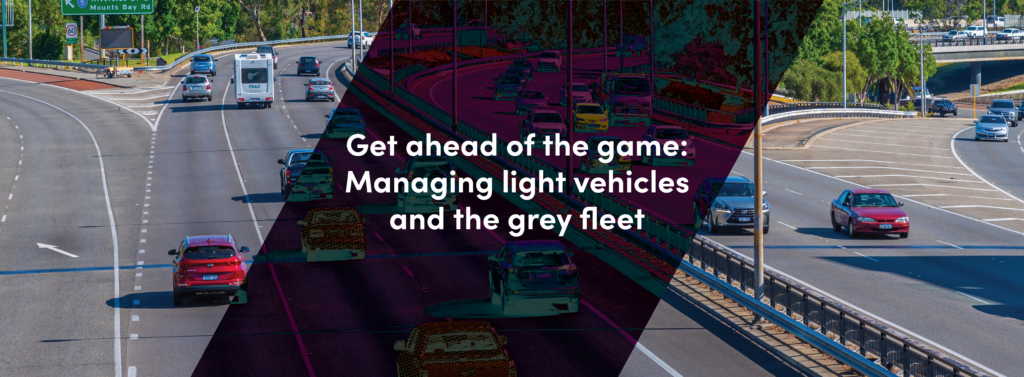Get ahead of the game: Managing light vehicles and the grey fleet

When you spend 30 years working in the same field, you learn a thing or two. In particular, you start to see patterns repeating and become skilled at anticipating and preparing for what is coming next.
That skill is even more useful in an industry like transport where both the regulatory framework and the business landscape are constantly changing.
For work driving safety expert Darren Griffiths, the next big challenge will be light vehicles being used for work purposes and, in particular, increasing regulation as grey fleet use grows.
He has seen many changes in fleet management over the past three decades, including Chain of Responsibility and other regulation of heavy vehicles and growing awareness around managing traditional fleets. Now he believes its grey fleets turn in the spotlight.
In NRSPP’s May webinar, the Griffith University Associate Professor will share observations and lessons from three decades in work driving safety research and working directly with transport companies. Darren will focus on emerging challenges for owners and managers who operate a fleet of any size, outlining tools to help navigate the ‘vehicle as a workplace’ landscape to avoid prosecution and the warning signs to look out for to prevent incidents.
Darren believes increasing use of private vehicles for work and the natural progression of other industry regulation, such as recognition of the vehicle as a workplace in health and safety legislation and, more recently, accounting for fleet greenhouse emissions, will drive an increased focus on grey fleet.
The main challenge in managing grey fleet is that established traditional fleet practices are not flowing through to grey fleet, such as purchasing 5 star ANCAP safety-rated vehicles and mandated pre-start checks and service schedules. Darren is urging organisations to begin to manage their grey fleet properly before prosecutions and incidents increase.
“Even though research, organisational awareness and processes have improved over time, vehicle crashes are over-represented in workplace fatalities,” he says.
“There’s legislation around heavy vehicles, with things like Chain of Responsibility, and there’s also legislation around work health and safety for light vehicles, and while there has been increasing awareness a lot of people are not aware of regulations around light vehicles, so our response has been a little bit lacking on the application side.
“I think grey fleet is going to be our biggest challenge over the next period of time. People have become better and more familiar with what we refer to as traditional fleet, but now there’s so many moves towards people using private vehicles for their work driving. It’s often attractive to provide some sort of salary sacrificed package or car allowance rather than being responsible for procurement of vehicles, which is why there’s a lot of grey fleet use.
“The huge challenge with grey fleet is that the legislation, responsibility and safety aspects all apply in the same way they do for any vehicle that’s used for work, but you’re in a position where the organisation still has the same responsibilities but they don’t have as much direct control over that vehicle. There also tends to be an attitude of ‘that’s not my problem because that’s your car’, whereas work health and safety legislation still says a vehicle used for work is a workplace.
“Regardless of the size of the organisation, we need to build similar processes that are assisting and ensuring owners of private vehicles are covered in the same way to make sure the vehicle is roadworthy, insured and well maintained, like any fleet vehicle.”
Click here to find out more about managing grey fleet and work vehicle safety and here to register for NRSPP webinars





